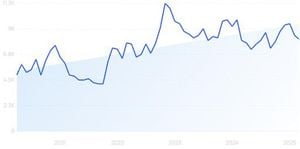Ukraine is ramping up its military capabilities, employing long-range missiles supplied by Western allies to target Russian facilities deep within its borders. This escalation follows President Joe Biden's groundbreaking authorization for Ukraine to utilize such advanced weaponry, potentially shifting the battlefield dynamics.
On recent occasions, Ukrainian forces have taken advantage of these upgraded munitions to conduct strikes on key Russian assets, including airbases and ammunition depots. These operations come at a time when Russian forces are advancing, capturing territory and consolidifying control over strategic locations.
The long-range strikes have stirred significant responses from Russian officials. President Vladimir Putin recently underscored the ramifications of the West's decision, cautioning against what he termed the direct involvement of NATO countries. He stated, "If Ukraine is allowed to use long-range Western-provided missiles against targets inside Russia, it would mean the direct participation of NATO countries in the conflict." This statement reflects the Kremlin's fear of expanded military involvement from Western nations, which could escalate the conflict to unprecedented levels.
The missiles approved by Biden include the U.S.-made Army Tactical Missile System (ATACMS) and the British-French Storm Shadow missiles. The ATACMS are formidable, capable of reaching targets up to 190 miles away. With their high speed and guidance systems, these missiles are notoriously difficult to intercept, providing Ukraine with the ability to strike not just front-line forces but logistical hubs well behind enemy lines.
The ATACMS come equipped with dual purpose warheads, delivering devastating effects on targets. This capability improves Ukrainians' tactical options significantly, allowing them to disrupt Russian supply lines and command structures. Analysts suggest this could impact operational planning for Russian advances.
Meanwhile, the Storm Shadow missile, which boasts a longer range of approximately 340 miles, has so far been restricted to operations against Russian-occupied targets within Ukraine. This missile is known for its stealthy profile, allowing it to fly low and evade radar systems, ensuring its efficacy against fortified positions.
With Western powers lifting prior restrictions on these missile systems, Ukraine is seizing the opportunity to extend its operational reach. Kyiv has been vocal about the need for enhanced firepower, arguing such weaponry is necessary to combat the threats posed by Russian military actions and to protect its citizens.
The approval from the U.S. has shifted aspects of military strategy on both sides. Ukrainian forces are now preparing to capitalize on their new capabilities, readying for missions aimed at dismantling Russian command and control, which are pivotal for their operations.
This dramatic shift is not without its challenges, though. Ukrainian officials have emphasized the importance of timely deliveries and continuous operational intelligence from their Western allies to maximize the effectiveness of these strikes. With Russian forces reorganizing, there's added pressure for Ukraine to act decisively.
Putin’s response has been stark. He warned of the potential for conflict escalation, noting, "This will mean NATO countries, the United States, and European countries are fighting against Russia," should hostilities escalate as Ukraine uses its new arsenal. His remarks signal the Kremlin's commitment to countering these long-range attacks with greater resolve.
Recent developments demonstrate not just the capability but also the willingness of Ukraine to engage directly with the Russian military on terms potentially unfavorably tilted against them previously. Missiles like the ATACMS and Storm Shadow are enabling Ukrainian forces to strike back effectively, keeping the pressure on Russian commanders.
Geopolitically, this situation continues to evolve rapidly, with the West reaffirming its support for Ukraine amid concerns over Russian aggression. Defense experts are closely monitoring the situation as it develops, recognizing the significance of these capabilities on tactical and strategic levels.
The introduction of these Western-supplied missiles marks a potential turning point for Ukraine's defense posture. With active combat operations due to the changing militaristic approach, both military and civilian sectors must prepare for any consequent escalations.
Overall, Ukraine's ability to strike deep within Russian-controlled territories exposes the vulnerabilities of the Russian military structure and complicates Moscow’s military calculations moving forward. This dynamic is expected to shape the nature of the conflict as both parties assess their next moves on the battleground.
Meanwhile, on the ground, civilians continue to bear the brunt of the conflict. Strikes on urban centers have led to widespread devastation and humanitarian concerns, prompting international calls for urgent humanitarian aid and protection of non-combatants caught in the crossfire.
With the stakes high and both Ukraine and Russia gearing up for the potential ramifications of these developments, the coming weeks could be decisive. Analysts and military experts are acutely aware of the need for a nuanced response as the balance of power continues to shift, and the consequences are felt not just regionally but globally.



